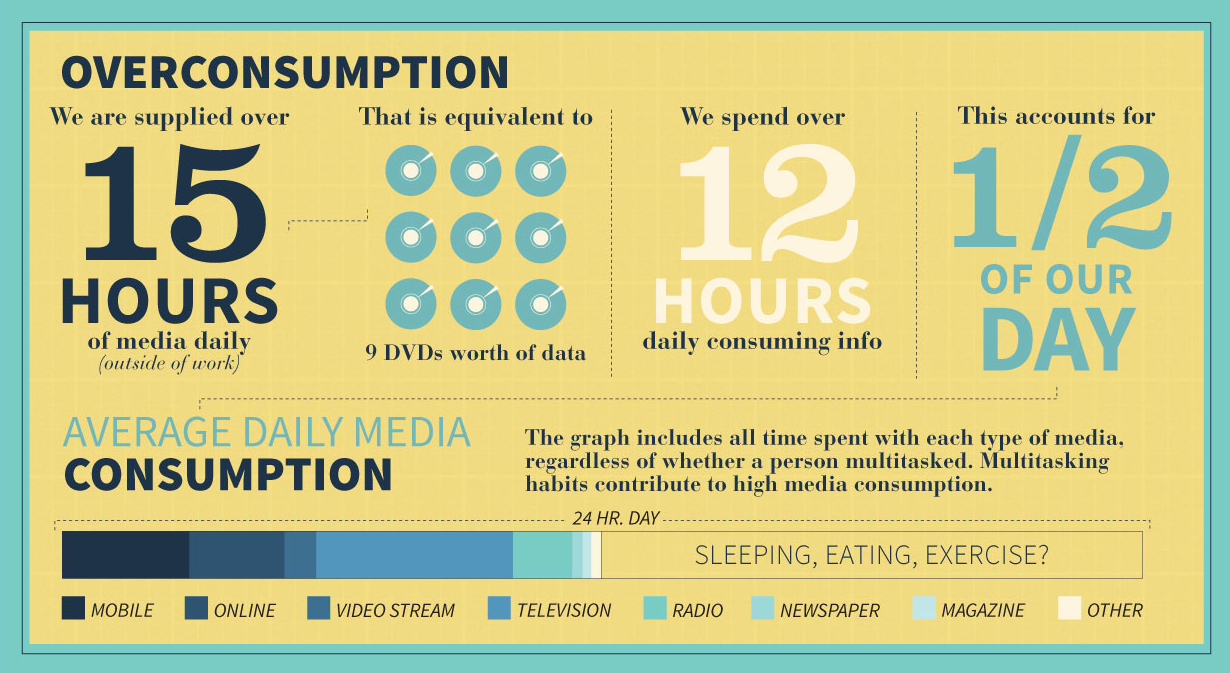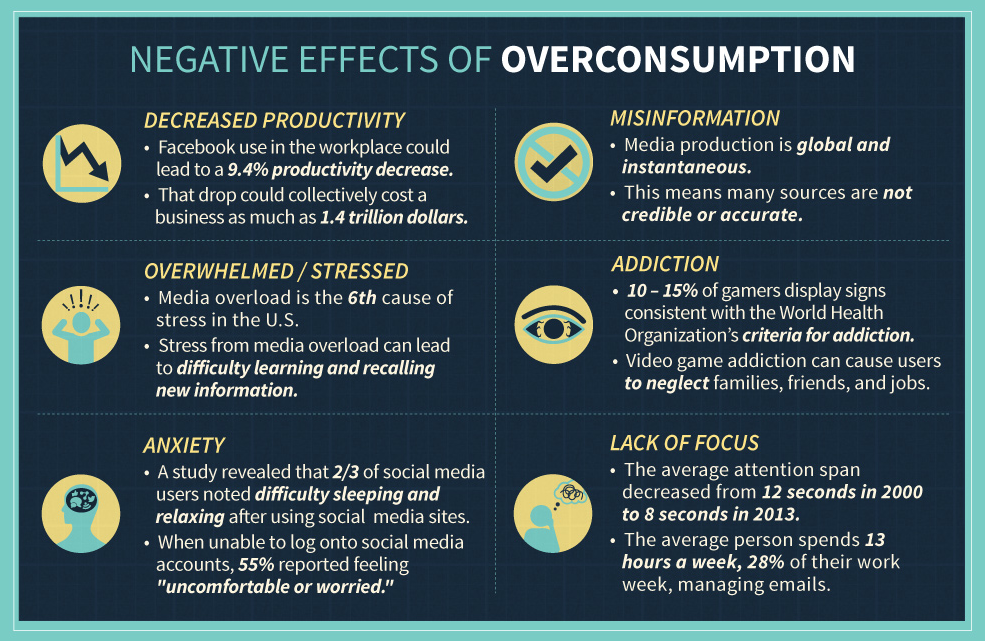Team Lemonly is proud to present our intern team’s first infographic project of the summer. Read about how they came up with their idea and see what facts they found about being “media fit.”
Forming Healthy Habits for Media Consumption
When brainstorming ideas for our first infographic, Olivia and I decided to write down a list of our interests in order to find overlap for an infographic idea. Unfortunately, our lists were quite different. Where she had tennis, I had volleyball. Where she had music, I had politics. Where she had beer, I had beer. Oh, shoot, we missed that opportunity!
Since our first brainstorming attempt was a failure, with the exception of us both enjoying beer, we decided to compile lists of IG topics that we found relevant and interesting. It was during this process that I remembered a quote from Geneva Overholser, a journalist and former professor, from when she visited my college and gave her lecture, “Responsible Public, Responsible Journalism.” She asked, “are you going to consume media that is rich and diverse, or are you going to consume junk?” This question left an impression on me. It was the first time I ever thought about the media I look at daily as consumption or as a “media diet.”
It is from this idea that our first infographic hatched. Olivia and I wanted our infographic to address why people need to be cognizant about what media they consume. We wanted to learn how to choose media that will make people happier, healthier, and smarter.
We found the media consumption section of our infographic most shocking. We are supplied over 15 hours of media outside of work each day. This number accounts for the media that is delivered to us when we are surfing the web, have the television on, are playing the radio, buy a newspaper, etc. However, it does not mean we are paying attention this media. This number reveals how many sources are vying for our attention.
The fact that we spend approximately half our day consuming media proves just how important and influential what we consume is. Advancements in technology have caused media fragmentation. We no longer choose between print media, TV, and radio, but have a wealth of other media options available at our fingertips. The proliferation of mobile technology has contributed to the steady rise in our media consumption.
It is no wonder that there are several consequences, or should I say symptoms, of media overconsumption. From addiction to anxiety, being careless with your media consumption can negatively influence your life.
Check out the “Media Fit” infographic here to see our daily-recommended values of various types of media and to learn how you can consume media that makes you happier, healthier, and smarter.

